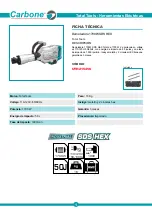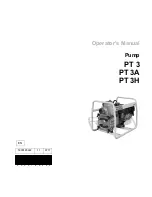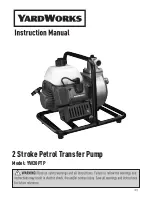
9 Care and maintenance
CAUTION
When this type of tool is used under normal operating
conditions, dirt and residues build up inside the tool and
functionally relevant parts are also subject to wear.
Reg-
ular inspections and maintenance are thus essential
in order to ensure reliable operation. We recommend
that the tool is cleaned and the condition of the pis-
ton checked at least daily when the tool is subjected
to intensive use, and at the latest after driving 3,000
fasteners.
WARNING
All cartridges must be removed from the tool. Check
to ensure that no fastener is present in the fastener
guide before carrying out maintenance or repairs.
CAUTION
The tool may get hot during use. You could burn your
hands.
Wear protective gloves when carrying out care
and maintenance. Allow the tool to cool down.
9.1 Care of the tool
Clean the outside of the tool at regular intervals with a
slightly damp cloth.
WARNING
Do not clean with a spray or pressure washer. Do not
permit foreign objects to enter the interior of the tool.
9.2 Maintenance
Check all external parts of the tool for damage at regular
intervals and check that all controls operate faultlessly.
Do not operate the tool if parts are damaged or when the
controls do not function faultlessly. If necessary, the tool
should be repaired by Hilti Service.
Use the tool only with the recommended cartridges and
power settings. Use of the wrong cartridges or use of
excessively high power settings may lead to premature
failure of parts of the tool.
CAUTION
Dirt and residues in DX tools contain substances that
may be hazardous to your health.
Do not inhale dust /
or dirt from cleaning. Keep the dust or dirt away from
foodstuffs. Wash your hands after cleaning the tool.
Never use grease for the maintenance/lubrication of
parts of the tool. This may lead to malfunctions. Use
only Hilti lubricant spray or a product of comparable
quality.
9.3 Servicing the tool
Service the tool if fastener driving power is found to be
inconsistent, if cartridges misfire or if parts of the tool
no longer move or operate smoothly and easily. In other
words, the required contact pressure increases, trigger
resistance increases, the cartridge magazine strip can
only be removed with a degree of difficulty or the cycling
action becomes stiff.
9.3.1 Disassembling the tool
7
CAUTION
When removing the spring clip from the base plate, the
spring clip may jump off the base plate very suddenly.
Take care to avoid injury to yourself or other persons.
Hold the base plate so that the spring clip, if it jumps
off, tends to jump towards the floor.
1. Lift the annular ring with a small prybar or a nail and
turn.
2. Pull the catch back and remove it.
3. Pull out the insert.
4. Remove the spring clip. Use a suitable tool for this
purpose (e.g. small prybar or nail).
5. Pull the base plate, complete with the fastener guide,
off the piston guide.
6. Pull the piston out of the piston guide.
7. Allow the fastener guide to slide out of the base
plate toward the rear.
NOTE
If the parts of the tool tend to stick due to
carbon build-up, use the piston to push the fastener
guide out of the base plate from the front.
9.3.2 Checking the piston for wear
NOTE
Never use a worn or damaged piston and do not tamper
with or modify the piston.
Replace the piston if:
- the piston is broken
- the piston is badly worn or chipped (e.g. a 90° segment
broken away).
- the piston ring is cracked or missing.
- the piston is bent (check by rolling the piston on a
smooth, flat surface).
9.3.3 Checking the fastener guide for wear
Replace the fastener guide if the tubular section is dam-
aged (e.g. bent, widened, cracked or broken).
9.3.4 Checking the spring clip for wear
Replace the spring clip if it is badly worn, bent or widened.
9.3.5 Cleaning
8 9 10 11
Clean the tool at least once a week or, respectively,
immediately after each period of heavy use (after driving
approx. 3,000 nails).
Use the appropriate brushes to clean the individual parts:
1. Clean the fastener guide and base plate, inside and
out.
2. Clean the piston and piston rings until the parts
move freely.
3. Clean the piston guide, inside and out.
4. Clean the inside of the housing.
en
8
Printed: 14.08.2014 | Doc-Nr: PUB / 5193679 / 000 / 00
Summary of Contents for dx 2
Page 2: ...1 Printed 14 08 2014 Doc Nr PUB 5193679 000 00...
Page 3: ...2 3 4 5 Printed 14 08 2014 Doc Nr PUB 5193679 000 00...
Page 4: ...6 7 Printed 14 08 2014 Doc Nr PUB 5193679 000 00...
Page 5: ...8 9 10 11 Printed 14 08 2014 Doc Nr PUB 5193679 000 00...
Page 6: ...12 Printed 14 08 2014 Doc Nr PUB 5193679 000 00...







































